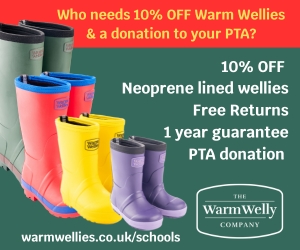What to include
Before you start writing your newsletter, ask yourself what you’re trying to accomplish and decide on the key information that will help you achieve your goals.
Key points to focus on might be:
- informing potential attendees about upcoming events and encouraging participation
- celebrating recent successes
- encouraging supporters to sign up for ongoing fundraising initiatives, such as a 100 club or shopping affiliate scheme
- highlighting how funds were used to purchase new resources, and the impact they will have on the children’s school life
- raising the profile of your PTA’s work
- making your committee more accessible
Bear these in mind while you’re planning how to use the space in your newsletter. Keep it concise and short; every word should work towards your goals.
Create your newsletter
Plan the frequency of your newsletters realistically. One near the start of every half term is enough to build a presence in supporters’ minds without overloading them. Create a schedule outlining the information you plan to share, but be flexible enough to change it around, should there be important news.
If writing isn’t your bag, put out an appeal for skilled writers in your school community. Don’t write too much; one clear, concise page should be enough.
Distribute newsletters widely through your usual channels: social media, book bags, emails or the school website. If possible, try to find an alternative to emailing an attachment – not only do they often end up in junk mail folders, it creates an unnecessary extra step for people to access your content.
For an additional (or alternative) presence, ask your school if you can have a section in their newsletter.
Newsletter checklist
- Focus on two or three fundraising campaigns over the year to avoid donor fatigue and build momentum. People are inspired and energised by working towards goals, so keep reminding readers why their donation is essential.
- Use persuasive language – pronouns such as ‘you’ and ‘we’ help create the sense that ‘we’re all in this together’. Other techniques (used every day by campaigners and advertisers) include rhetorical questions, emotive language and repetition.
- Share success stories, such as a recent grant you were awarded or a sponsored event that went well.
- Flag calls to action. What do you want parents to do – add a date to their online calendar, dig out an old uniform, or donate to an online event? Include links to web pages where parents can find more information, such as the PTA page on the school website.
- Keep your text bite-sized. Provide contributors with a strict word count – they should convey the most important information in 100 words or fewer.
- Introduce a #hashtag to support your fundraising, and share it on social media.
- If you have any business partners, include logos and/or contact details at the bottom to acknowledge their support.
- How to: write a press release, write a welcome letter, write letters to businesses
Design tips
Whether digital or hard copy, your newsletter needs to stand out and be instantly identifiable. Take the time to get your branding and layout right.
- Many computers have publisher software installed, otherwise ask around among your parents – you might be surprised how many of them have professional design software and experience. You could also create a Word template to populate, which can be inserted into the body of an email or printed.
- If something is difficult to read, people won’t bother, so use legible fonts that aren’t too small, and don’t place type over busy background images.
- Prioritise your messages, leaving parents in no doubt as to where you want them to focus. Lead the reader through the page, allocating different amounts of space for each story, using colours and font sizes to indicate importance.
- Don’t be tempted to cram in too much information – keep the text short and snappy and use graphics. Download a free fundraising thermometer and paste into your newsletter or use on your website.
- Keep the design simple – too many colours, images, border styles and font sizes can overwhelm readers and distract from your content.
- Remember the importance of images, and use them with quotes or captions, where possible. Photos of the children having fun at an event or enjoying new equipment underline why the PTA do what they do – and why parents support you. Make sure you have consent to share the images.
- Don’t be anonymous – include photos of key committee members alongside their contact details.
- Use the same sub-headings each time to help focus your content. Examples might include ‘Save the date!’, ‘Coming soon…’, ‘PTA purchases’ or ‘Meet the team’.







